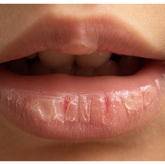
What is Hyperpigmentation and How to Get Rid of it?

Hyperpigmentation is when your skin develops spots of patches that are darker than your natural skin tone that is caused by an overproduction of melanin, the pigment that creates your skin color. Hyperpigmentation is particularly common among people of color, though it can affect anyone. Keep reading to discover more about the causes of this skin issue and how you can prevent hyperpigmentation and treat it.
Common Causes of Hyperpigmentation
There are many causes for hyperpigmentation for both people with melanin-rich skin or those with pale complexions.
Skin trauma covers a wide range of incidents, from the serious to the everyday, including acne, eczema, cuts, insect bites, scratching, or chafing. These kinds of traumas cause inflammation that encourages your melanin-producing cells to kick into overdrive.
This localized increase in melanin production can leave behind dark spots in place of the injury once it has healed. This type of hyperpigmentation is most common in children.
Melasma is characterized by brown freckle-like spots or large brown patches, particularly on the face (especially in the regions of the forehead, cheeks, bridge of the nose, and the chin) however also in other areas such as the neck and forearms. It is most commonly seen in women but can also occur in men and children.
There are several triggers for melasma, including sun exposure and genetics, but it is particularly linked to hormonal shifts, specifically steep rises in estrogen and progesterone that stimulate melanin production. For this reason, it tends to occur while taking oral contraceptives, at the onset of puberty in children, or during pregnancy.
One of the benefits of melanin is that it can help defend your child’s skin from sun damage (however, it cannot protect them from dangerous skin conditions such as skin cancer, and their skin care for melanin-rich skin routine should always include daily sunscreen) as such, skin produces extra melanin when it is exposed to the sun. This is what causes a suntan.
People who are frequently or excessively exposed to damaging UV rays can develop dark patches on their skin known as sunspots. Sunspots themselves are not cancerous; however, precancerous blemishes -which are common among people who have spent a lot of time in the sun- look very similar, so you should get yourself checked out regularly by a dermatologist. Children’s skin is extra sensitive to the sun, so keep your kids covered up as much as possible and use at least an SPF 30 broad-spectrum sunscreen.
Several medical conditions can cause instances of skin discoloration. One such condition is the adrenal gland disorder, Addison’s Disease, which can boost melanin production in the skin.
There are several drugs and medical treatments that have been linked to hyperpigmentation. These include nonsteroidal anti-inflammatory drugs, certain antibiotics, and some chemotherapy medications.

Preventing and Treating Hyperpigmentation
Although hyperpigmentation is not dangerous, many people who have it do not like its appearance and want to get rid of it. Fortunately, there are several treatments, products, and behaviors you can adopt to prevent or reduce hyperpigmentation, from giving your melanin-rich skin nourishment and moisture to getting a professional chemical peel.
Some of these methods are unsuitable for children, so always consult a dermatologist with experience treating children with dark skin before taking action to improve your child’s hyperpigmentation.
Keep Skin Moist and Hydrated
Keeping skin well hydrated is part of good skin care for melanin-rich children and adults, and there are several reasons why moisturized skin improves the appearance of hyperpigmentation.
Hyperpigmentation is more obvious when your skin is ashy or dry, while the ingredients found in products like Melabebe’s moisture & hydration crème activate brighteners in the skin. These same ingredients also boost cell turnover and regeneration, helping dark spots to fade quicker. They can also restore the skin’s fat barrier, which helps protect skin from the sun.
Discourage Your Child From Picking at Their Skin
Blemishes like acne, bug bites, and scratches are extremely tempting to pick at, but doing so can increase your child’s chances of getting hyperpigmentation. Touching skin traumas increases inflammation, increasing the production of melanin leading to dark spots.
Instead of picking at blemishes, keep them clean and hydrated. For itchy bug bites, use over-the-counter calming products to soothe the itching and relieve the temptation to scratch. If your child finds it hard not to touch their blemishes, invest in some natural skin care for children and show them how to look after the skin rather than damage it.
Try Over-the-Counter Treatments
Because hyperpigmentation is such a common issue, there are plenty of over-the-counter skin care products aimed at lightening dark spots. Effective hyperpigmentation products usually contain ingredients such as licorice root, vitamin C, kojic, vitamin E, niacinamide, arbutin, and soy.
Many people have great success with these products, but it can often take weeks or months to notice any change. This can be frustrating but avoid the temptation to keep piling on new products before they have had a chance to work, as this can cause irritation.
Do not try these methods on your kids without advice from your dermatologist; skin care products for melanated children should be focused on nourishment, like the natural, vegan, moisturizing cream by Melabebe.
Get Treatment From Your Dermatologist
While over-the-counter remedies can be effective, you are much more likely to have success with treatment prescribed by a professional dermatologist specializing in children’s skin issues. The most common product they prescribe is prescription-strength hydroquinone, which has a fantastic success rate of lightening hyperpigmentation.
Your dermatologist must closely monitor this treatment because it can cause irritation and skin bleaching. It can also make your skin more sensitive to the sun’s harmful rays, so you must be extra vigilant with your sunscreen routine while using products that contain hydroquinone.

More Aggressive Procedures Are Only for Adults
In cases of stubborn hyperpigmentation, topical remedies are not always enough. However, dermatologists can recommend other procedures to improve dark spots, such as chemical peels, dermabrasion, microdermabrasion, or laser treatment. While these treatments are effective for adults, they are too aggressive for children.
Get Rid of Hyperpigmentation for Good
Hyperpigmentation is a common skin imperfection that disproportionately affects people of color. Fortunately, it is not dangerous, and there are many methods to improve its appearance or get rid of it entirely if your child feels self-conscious about it.
However, if you are serious about reducing your child’s hyperpigmentation, you should try to reduce their chances of getting it by protecting them from the sun and using nutrient-rich moisturizing products.






